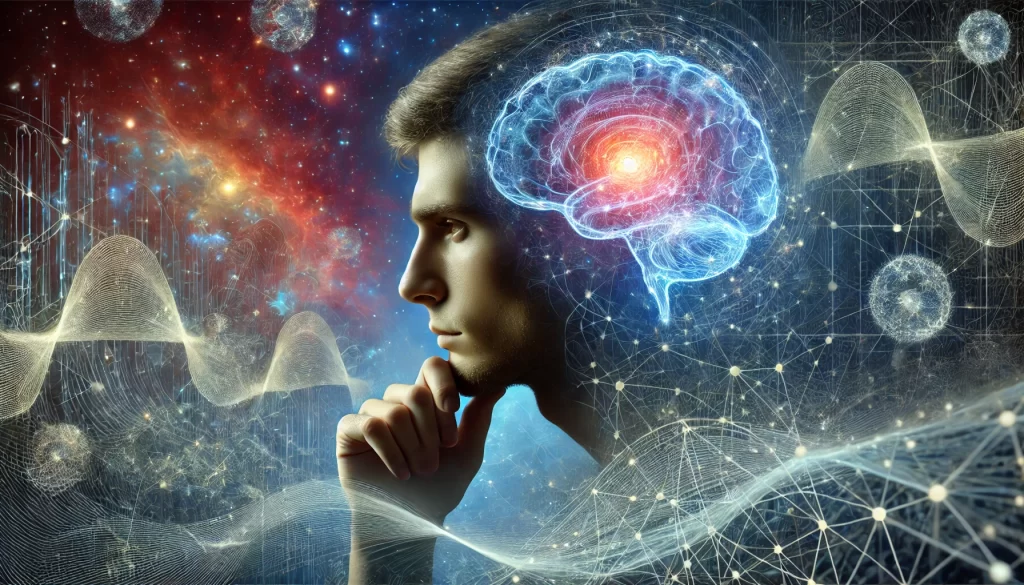Delving into the Layers of Self-Awareness and Mental Representation
In our ongoing exploration of the universe and the mysteries of the mind, higher-order theories of consciousness offer a compelling framework for understanding what it truly means to be aware. These theories propose that a mental state is not merely a collection of neural firings or sensory inputs but becomes conscious only when it is accompanied by a higher-order representation—a reflective state that observes and interprets the primary experience. This idea challenges the traditional notion that consciousness is a simple, first-level phenomenon, suggesting instead that self-awareness emerges from a meta-cognitive process that constantly monitors and evaluates our mental states.
At the heart of this discussion lie two central variants: higher-order thought (HOT) theories and higher-order perception (HOP) theories. HOT theories argue that consciousness arises when a mental state is the target of a thought about that state, essentially positing that thinking about our experiences renders them conscious. On the other hand, HOP theories maintain that consciousness is linked to a distinct perceptual experience of our mental states, as if we were “seeing” our thoughts from a meta-level. Both perspectives underscore the crucial role of self-representation and have spurred vibrant debates among philosophers and scientists alike. These discussions not only challenge our understanding of introspection but also call into question how we delineate the boundary between unconscious processing and the full emergence of a conscious experience.
Despite the allure of higher-order theories, they are not without their critics. Skeptics point to issues such as the regress problem—questioning how many layers of higher-order representation are required before a mental state is truly conscious—and argue that these theories might oversimplify the rich, qualitative texture of subjective experience. By contrasting higher-order approaches with first-order theories, which focus solely on direct sensory or cognitive processes, researchers expose both the strengths and limitations of this meta-cognitive perspective. The debate continues to evolve as neuroscientific insights and philosophical analyses converge, urging us to reconsider the intricate balance between observation and experience.
What makes higher-order theories particularly fascinating is their resonance with broader themes at SpeciesUniverse.com. Just as quantum mechanics and relativity compel us to rethink the nature of space, time, and observation, so too do these theories invite us to probe the inner workings of the mind. The notion that consciousness emerges from a reflective process mirrors the way the universe itself may manifest higher-order structures—complex systems arising from simpler, interrelated parts. This synthesis of ideas bridges the gap between cutting-edge science and ancient contemplative traditions, prompting us to see self-awareness as both a biological evolution and a window into the deeper fabric of reality.
In conclusion, higher-order theories of consciousness not only deepen our understanding of the mind but also inspire a broader contemplation of our place in the cosmos. By examining how a mental state transforms into a conscious experience through self-reflection, we are invited to question and expand our perceptions of reality. John and the team at SpeciesUniverse.com encourage you to join this dynamic conversation—challenge assumptions, share your insights, and contribute to the ongoing exploration of the universe’s most profound mysteries.
Key Takeaways:
- Meta-Cognitive Emergence: Consciousness arises when a mental state is accompanied by a higher-order representation, emphasizing the role of self-awareness.
- Divergent Theories: The debate between higher-order thought and higher-order perception theories highlights different mechanisms by which we become aware of our mental states.
- Subjectivity Challenge: Critics argue that higher-order theories may not fully capture the qualitative, subjective aspects of our conscious experience.
- Interdisciplinary Bridge: These theories provide a conceptual bridge between philosophy, neuroscience, and cognitive science, enriching our understanding of consciousness.
- Cosmic Parallels: The reflective nature of higher-order consciousness mirrors broader cosmic principles, inviting us to explore the interconnectedness of mind, matter, and the universe.
“A mental state becomes truly conscious only when it is the object of a higher-order representation—an internal mirror reflecting our very own mind.”
Call to Action:
Join us at SpeciesUniverse.com in our journey to unravel the mysteries of consciousness. Share your insights, challenge conventional thought, and be part of a community committed to exploring the depths of the mind and the universe. If you have thoughts, questions, or new perspectives, reach out and contribute to the conversation—together, we can redefine what it means to be conscious.
More details: here
~Comments always welcome…
Reference:
- Stanford.edu/Plato (Website)


Leave a Reply